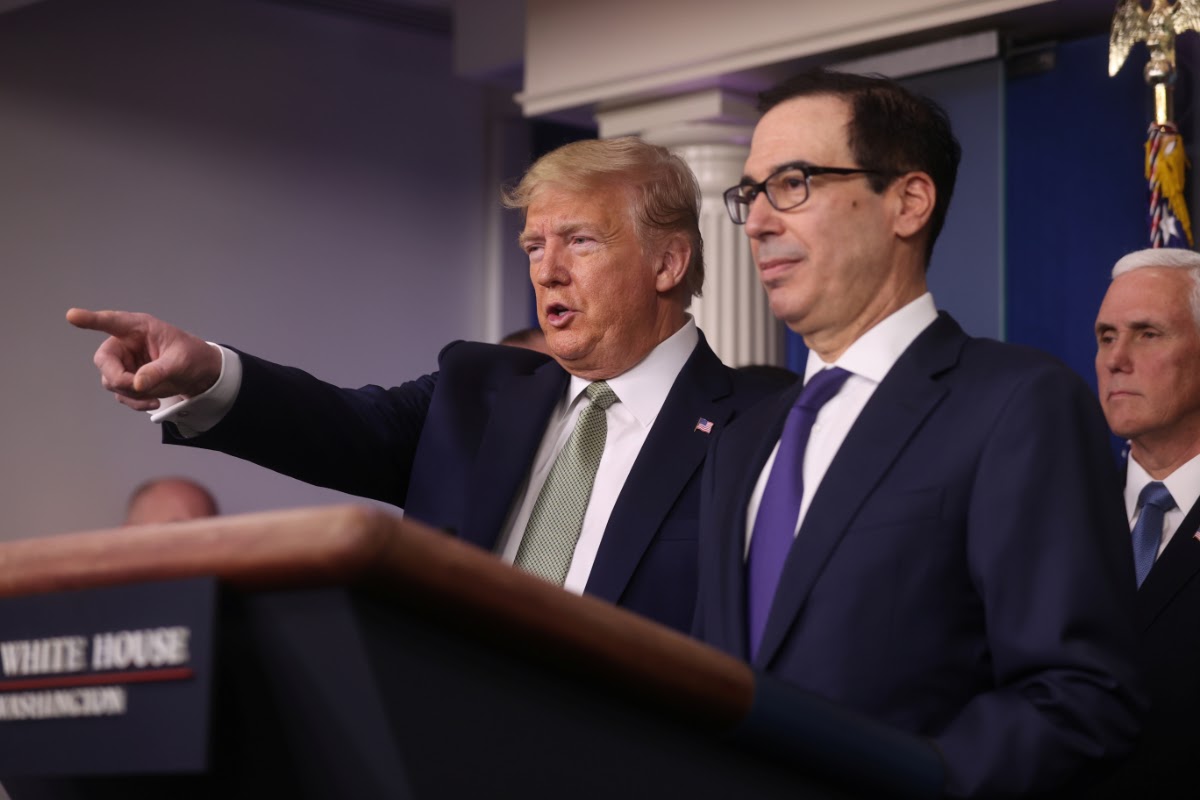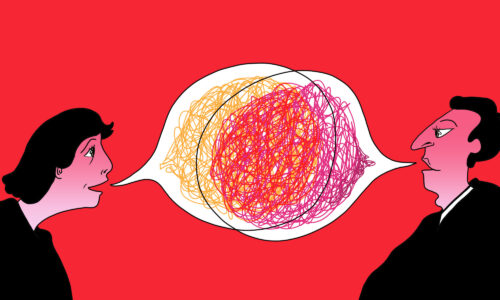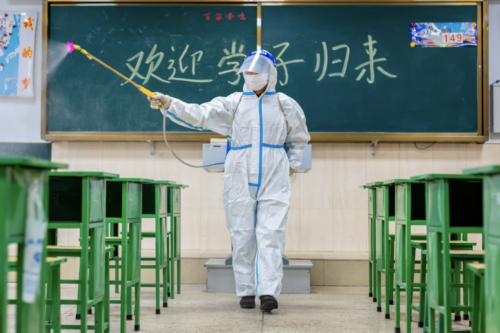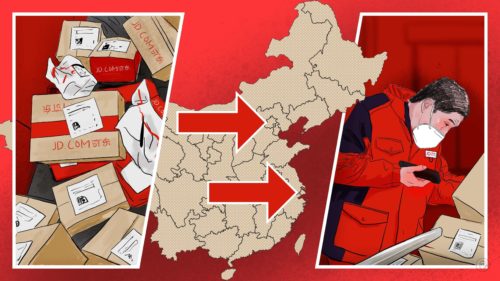China defends expelling journalists; Trump defends use of ‘Chinese Virus’
U.S.-China relations are headed toward a deep freeze.

Donald Trump pointed the finger at China, and everyone else, at the daily coronavirus press briefing at the White House today. REUTERS/Jonathan Ernst
Yesterday, China expelled all American journalists working in the country for the New York Times, Wall Street Journal, and Washington Post. The action “will affect at least 13 of our colleagues,” the Foreign Correspondents’ Club of China said in a statement, adding, “There are no winners in the use of journalists as diplomatic pawns by the world’s two pre-eminent economic powers. Journalists illuminate the world we live in. China, through this action, is dimming itself.” The Foreign Correspondents’ Club of Hong Kong also raised alarm about the “serious erosion of the One Country, Two Systems principle” that was implied by Beijing’s extension of the visa bans to Hong Kong.
Chinese state media cheered the action: “China takes direct aim at rumormongering US media” was the Global Times headline for an article that criticized the New York Times in particular for its coverage of the coronavirus outbreak, the situation in Xinjiang, and the Hong Kong protests.
The Chinese foreign ministry also defended the action as “entirely necessary,” and warned, “If the U.S. continues on the wrong track, China will be forced to take further countermeasures,” per the SCMP.
For more, see:
- China’s expulsion of American journalists raises red flags over Hong Kong / WSJ (paywall)
- China rebukes the U.S. after saying it will expel American journalists / NYT (porous paywall)
- U.S.-China ties worst in decades after journalist expulsions / FT (paywall)
Meanwhile, Trump defends calling the pandemic the “Chinese Virus”
COVID-19 is a pandemic that is on its way to pushing the global economy into recession, after it ground China’s economy to a halt. Total cases worldwide surpassed 200,000 last night, more than doubling in just over a week’s time, and all but about 30 countries or territories out of the 195 recognized by the UN have reported cases.
Will Donald Trump blame China for the expected global recession in 2020? That is the multi-trillion-dollar question asked by the SCMP. Unfortunately, the answer to that is all too easy to predict.
Trump doubled down on using the phrase “Chinese Virus” to describe COVID-19, insisting that the term is “not racist at all,” per CNBC. As the death toll of COVID-19 rapidly mounts in the United States, Trump lied this morning that he has “always treated the Chinese Virus very seriously,” adding that “many lives were saved” because of his decision to close the border with China. In reality, Trump dismissed any risk from COVID-19 up until days ago, and experts say that border closures have been “ineffective” in stopping the spread of the virus.
The Chinese government is also doubling down on the conspiracy theory that the virus originated outside of China. Here is the Chinese Ambassador to South Africa on Twitter: “I am not surprised to see the U.S. plays the blame game. Authoritative sources made it clear that the coronavirus is neither originated from China, nor ‘made in China.’ The scientists have the final say.”
See also an op-ed by John Pomfret in the Washington Post: The U.S.-China coronavirus blame game and conspiracies are getting dangerous.
A possible “second wave” outbreak in China
“Officials in South Korea, Taiwan and parts of China and south-east Asia are rushing through new measures after a second wave of new infections following weeks of declines,” the Financial Times reports (paywall). Taiwan’s foreign ministry announced that it would restrict entry to most noncitizens, and require all arrivals to undergo a 14-day home quarantine beginning March 19.
China continues to face risks of reinfection from abroad, and at least according to official numbers, imported cases of coronavirus have outpaced local infections for five days in a row, per Reuters. Some cities, including in Hubei Province, are loosening restrictions on internal travel, but no one knows what might happen if all quarantines are lifted. Per Bloomberg:
Even if there had been many times more coronavirus cases than officially reported by the Chinese government, less than 1% of the population would have been infected in its first wave, “leaving most people in China susceptible,” said Raina MacIntyre, a biosecurity professor at the University of New South Wales in Sydney.
“The global pandemic will not be contained until we have a vaccine, or most of the population is infected,” she said.
—Lucas Niewenhuis






